I had the opportunity to visit some very beautiful temples in Karnataka, India in March, 2018. This is the first of two posts and it will focus on the Hoysaleswara Temple in Halebeedu (also spelled Halebidu). Having arrived in Bangalore around 1:00 am and finally turned off the light at 3:00 am, we got up at 7:00 to head off to Halebeedu and Belur, a three and a half hour, 140 mile (226 mk) drive. A subsequent post will discuss the visit at Belur.
We stopped on the way at Hotel Mayura, a nice restaurant, and had a traditional Indian breakfast of dosa and another deep fried bread that was all puffed, served with a variety of curries. I had stopped at this restaurant in October, 2016 on the way to visit Shravanabelagola, a Jain shrine with a massive statue. I wrote about that trip in March, 2017.
The Hoysaleswara Temple was built from 1160 to 1121 AD. In the 14th century, Halebeedu was twice sacked by invading Muslim armies, and the temple was damaged during these conflicts. The temple today is largely intact. We arrived just before mid-day and there was a good crowd at the temple, busy but not too busy. This is the walkway from the north parking area to the temple.
Even from a distance you can see the intricate detail of the carvings on the temple. The temple is made from soapstone. Soapstone is soft when quarried, making it suitable for carving and decoration, but it hardens over time, so the carvings are durable. This is the north entrance to the temple.
Visitors to the temple were very colorfully dressed. As with most historical temple sites in India, this is not just an historical site, it is an active place of worship.
Our hosts had arranged for guide from Indian Department of Tourism. Our guide, Uma Maheshwari, was very knowledgeable and articulate. The details she provided made our visit much more interesting. There is a museum near the temple, but we did not visit it.
There are two seated Nandi (bulls) as part of the temple complex. This is the North Nandi. I visited a very large Nandi in Bangalore in the fall of 2017.
The pillars around the temple were clearly cut with a lathe. They almost all have the ground circular look like this one which is next to the North Nandi.
Here you can see similar pillars inside the temple itself. In spite of the heat of the day, it was comfortable inside the temple. The design clearly keeps the heat down while allowing breezes through.
Light streaming in through carved openings reveals the beautiful detail on almost every surface inside the temple.
You can see a Nandi behind the ladies stepping out of the door.
Ceiling carvings like this one are above each alcove.
The bright sunlight highlights another visitor at the far end of the temple.
Outside the southern entrance, there are Dvarapalas, or door guards. According to Wikipedia, these were added after original construction was complete. They were damaged in the invasions I mentioned above, but remain impressive pieces of art.
The exterior carvings are even more impressive than the interior ones. You can see in this picture that they were made in bands. Wikipedia identifies 12 bands. Quoting from that link:
The outer walls of the temple are intricately carved and show signs of intentional damage. The labeled bands (mouldings) around the temple are: 1: marching playful elephants with different expressions 2: lions, part of the royal insignia of the Hoysalas 3: thinner miniature scroll (mostly nature motifs, some dancers, musicians, daily life) 4: horsemen in different postures 5: thinner miniature scroll (mostly nature motifs, some dancers, musicians, daily life) 6: friezes of scenes narrating legends from the Hindu texts (Ramayana, Mahabharata, Puranas, Vedic mythologies) 7: makaras (mythical sea creatures) 8: hamsa and peacocks 9: professionals, dancers, musicians, daily life of people 10: mythical creatures, festivals, ceremonies 11: artha, kama, dharma scenes including courtship and mithuna (eroticism, sex), various occupations, some mythical scenes 12: large image panels (deities, spiritual legends from Hindu texts)
This panorama shows the west side of the temple with the layers clearly visible.
One of the best things about having a guide was that she was able to tell us the Hindu mythology behind the artwork. I suppose I should have taken notes, as I do not remember the details. But at each corner, she was able to talk about the story and what it represented.
Detail of a warrior.
I do remember the story related to this picture. The circular object is a Padmavyuha or Chakravyuha. It is a military formation based on a maze that entangles the enemy. It plays a role in the Hindu epic text the Mahabharata. Knowledge of how to defeat it was part of the legend.
Note the man on the right in clearly Western attire. This was carved in the 12 century, so it is interesting that the contact was sufficient with the West to make it into the carvings of this temple.
Finally, children will be children. I caught these girls climbing the walls to get a closer look. Naughty.
Facebook captures the last photo from a post for its thumbnail, so I will repeat this photo I like very much here.

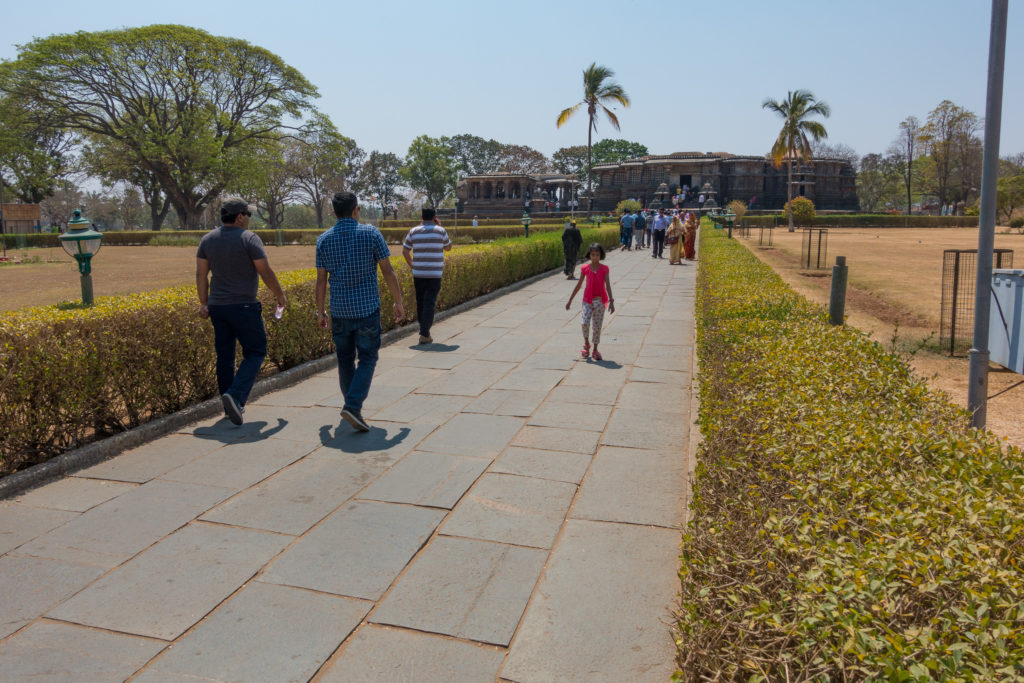
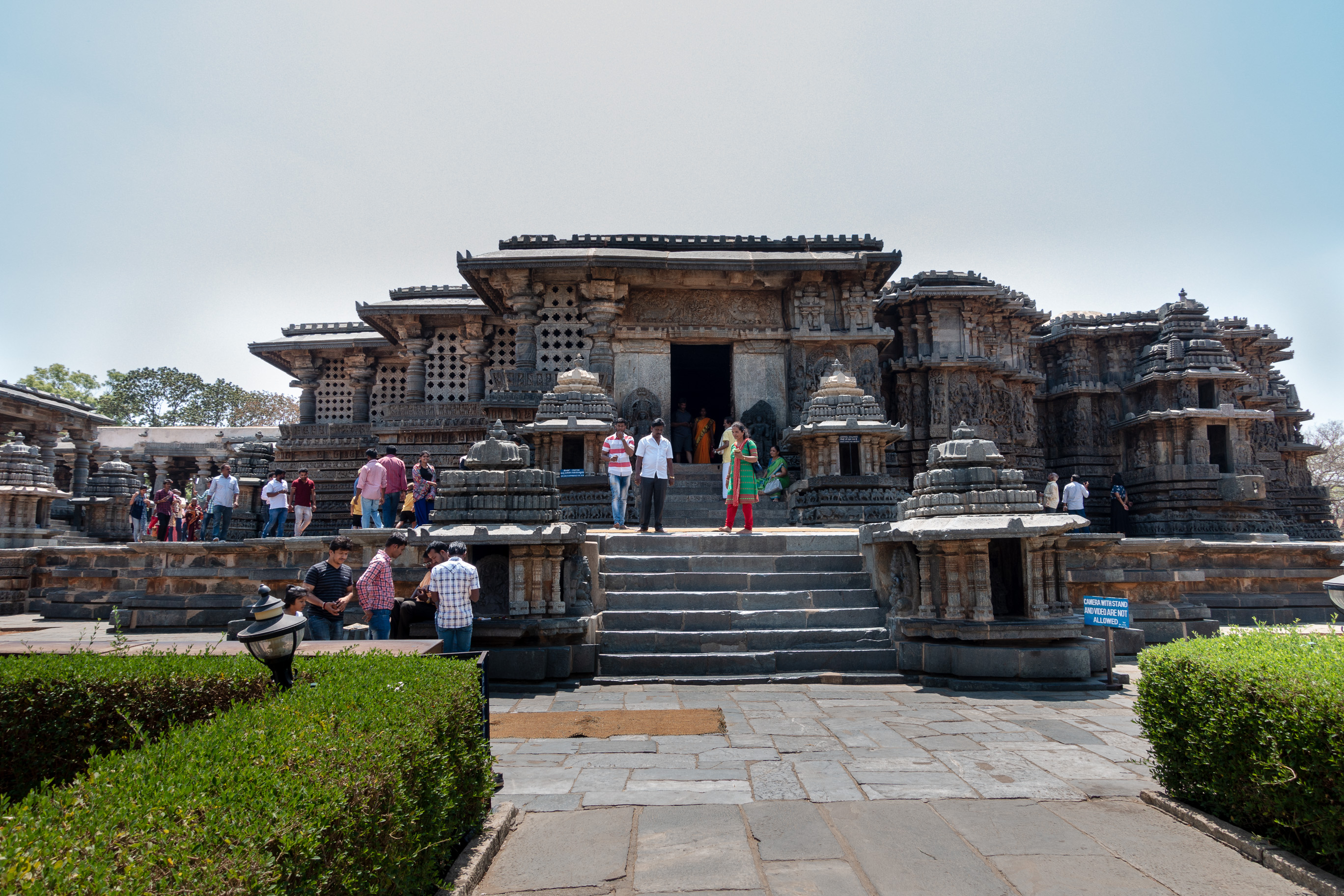
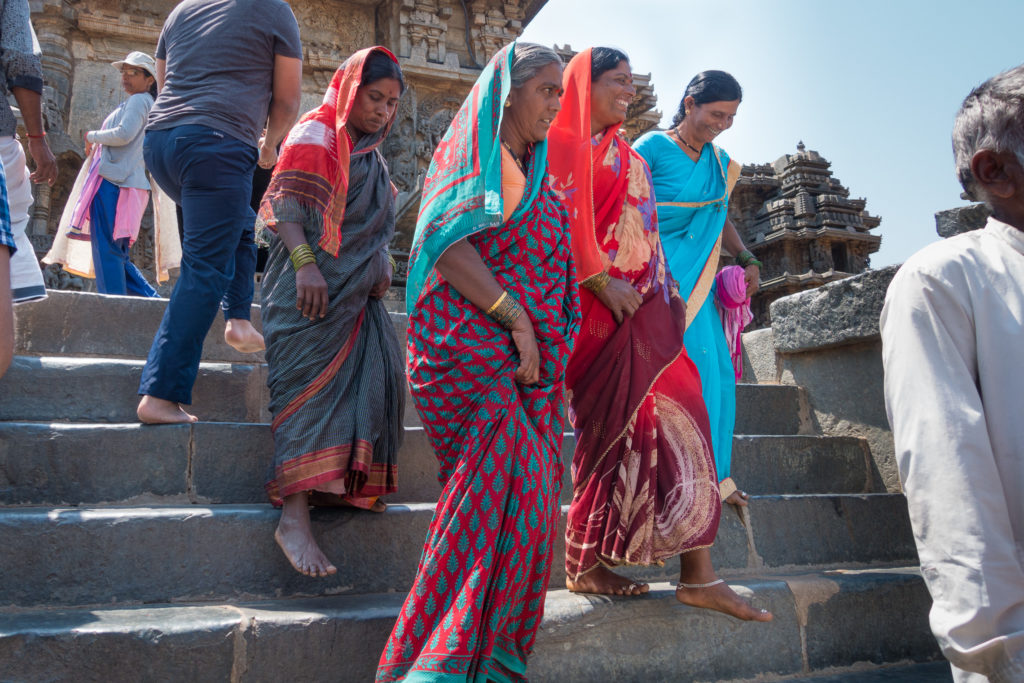
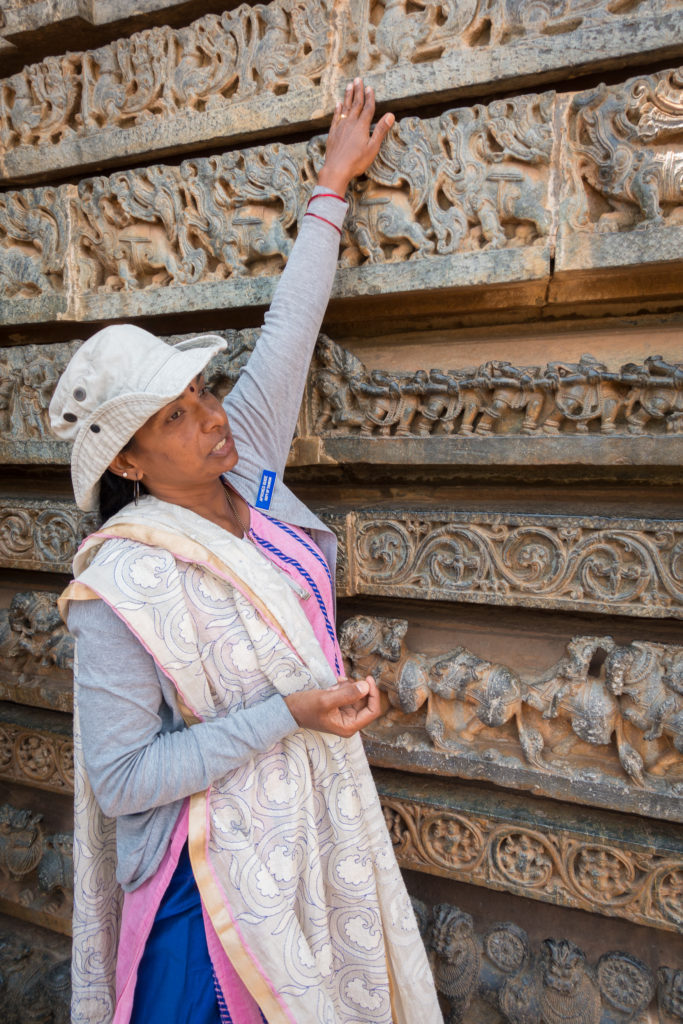
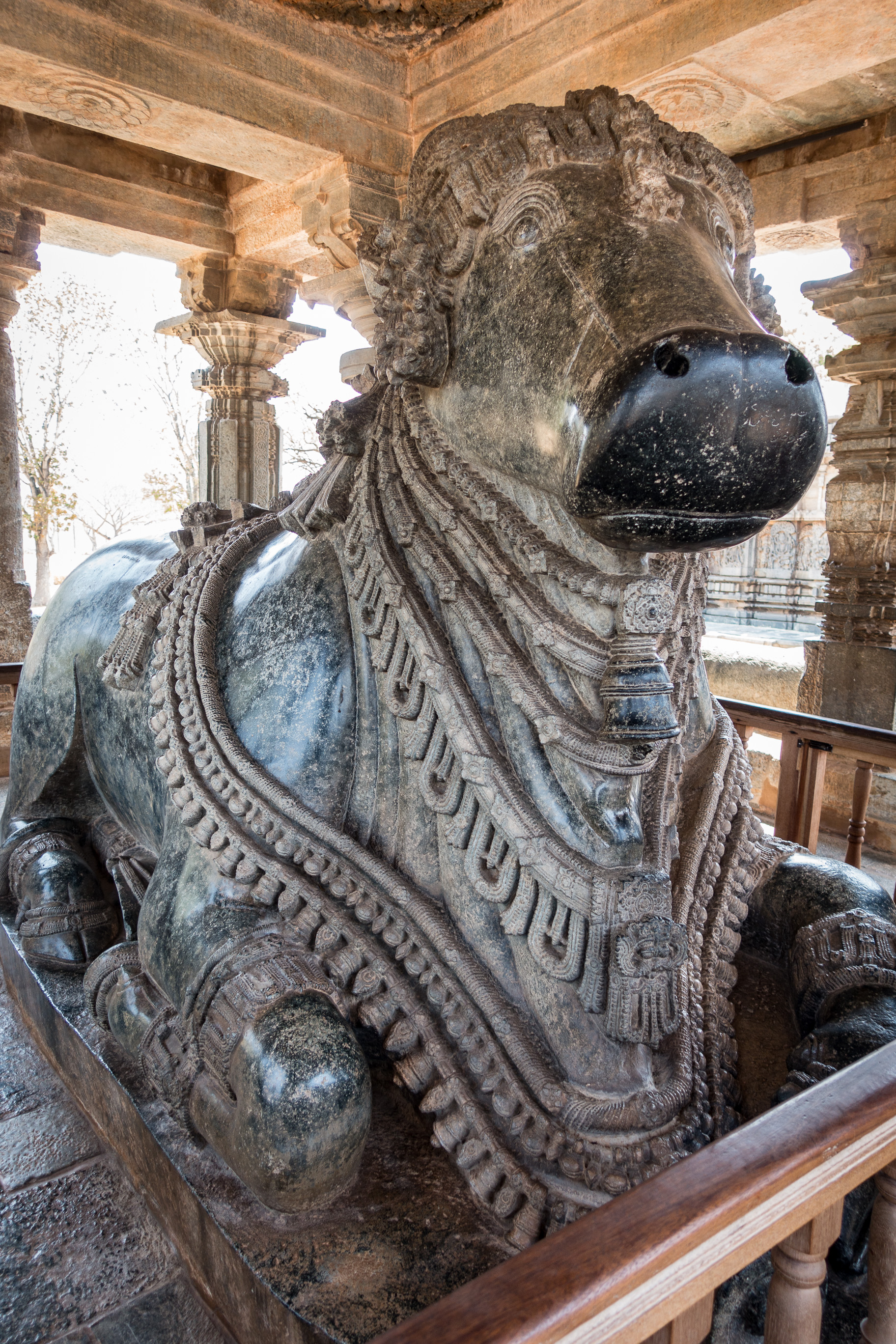

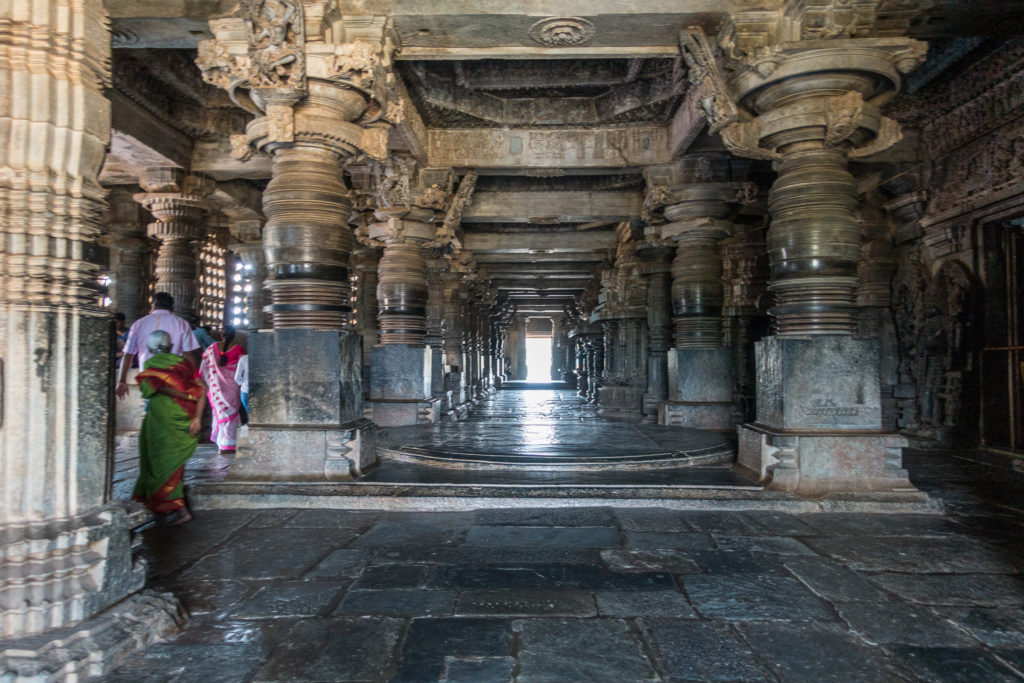
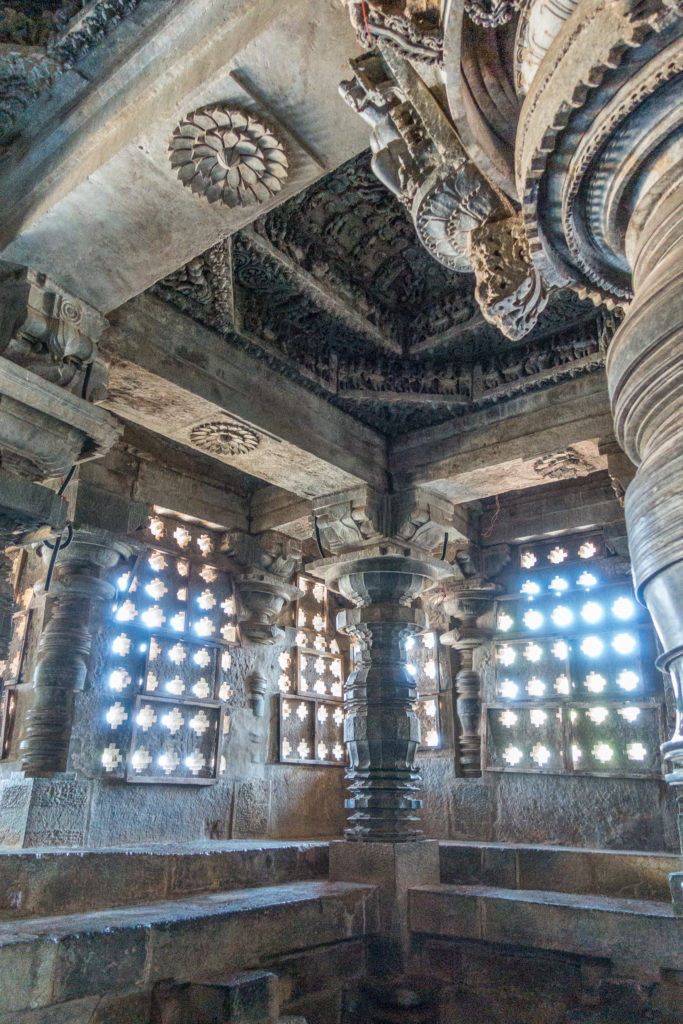

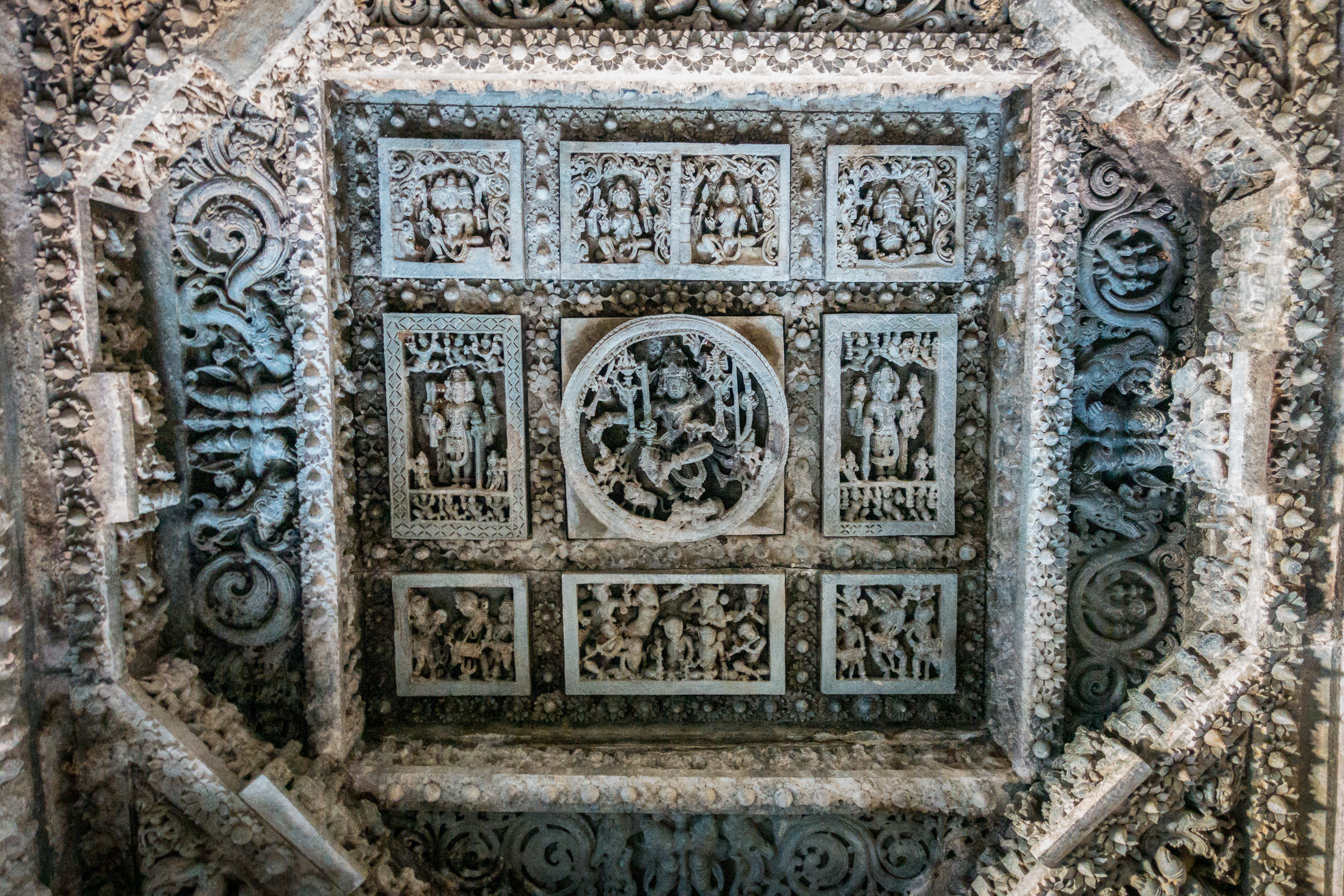

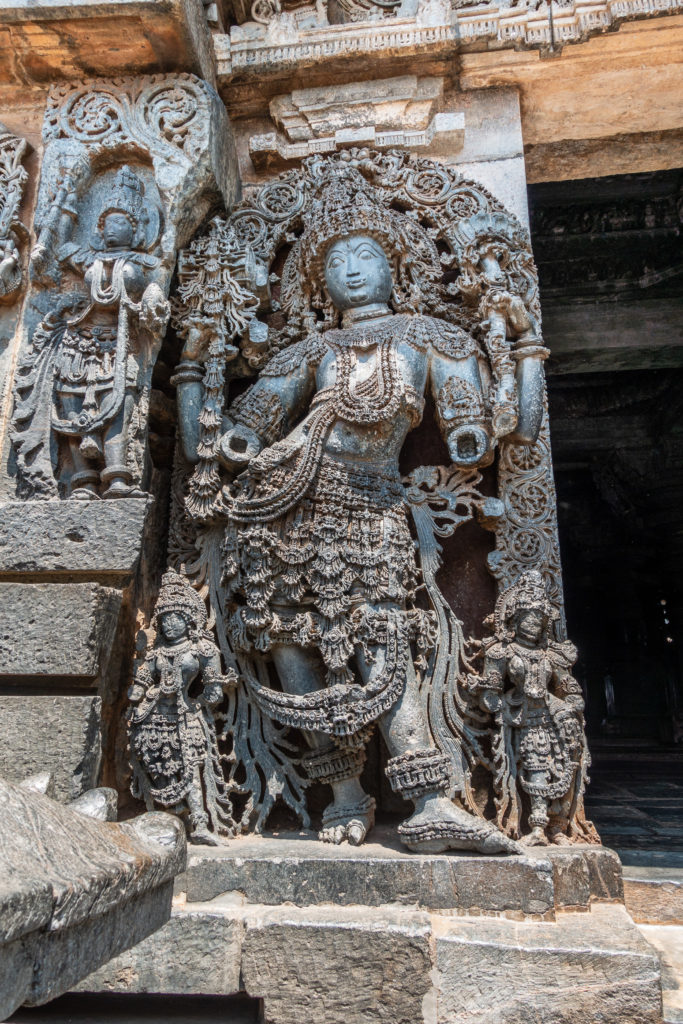

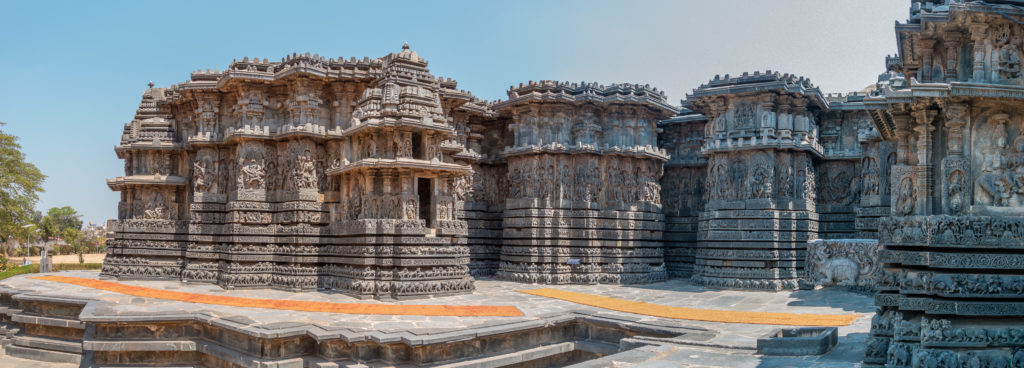
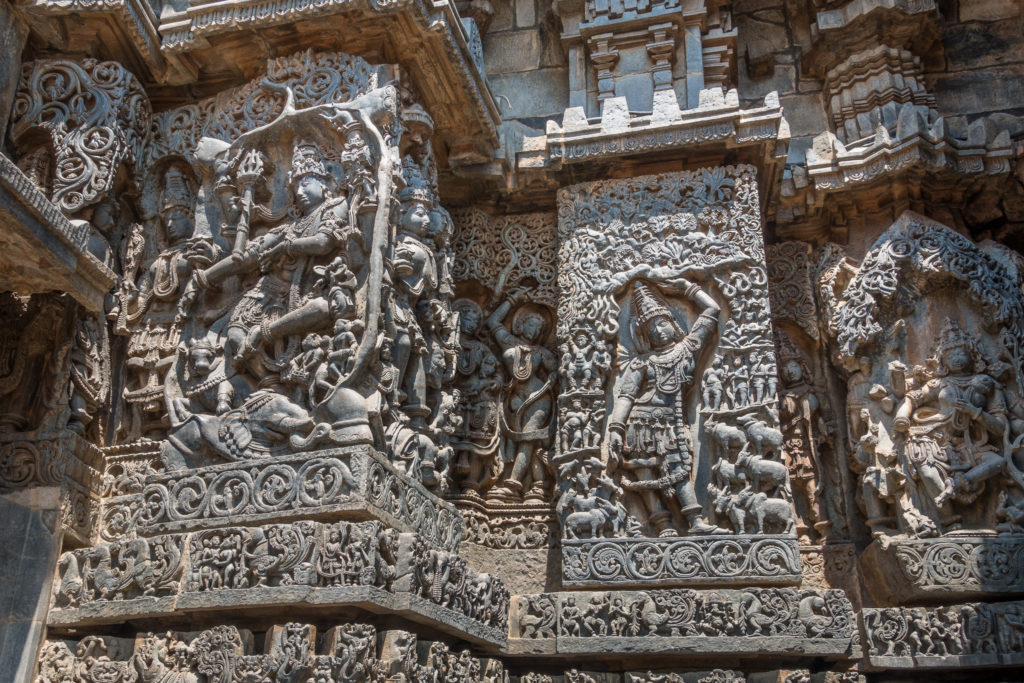
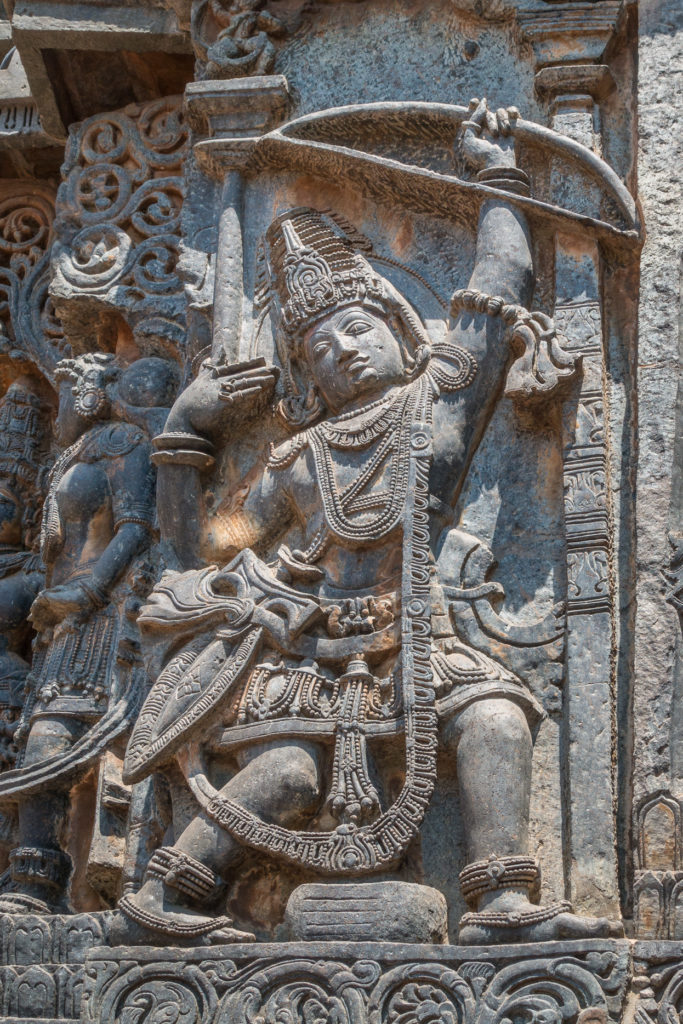
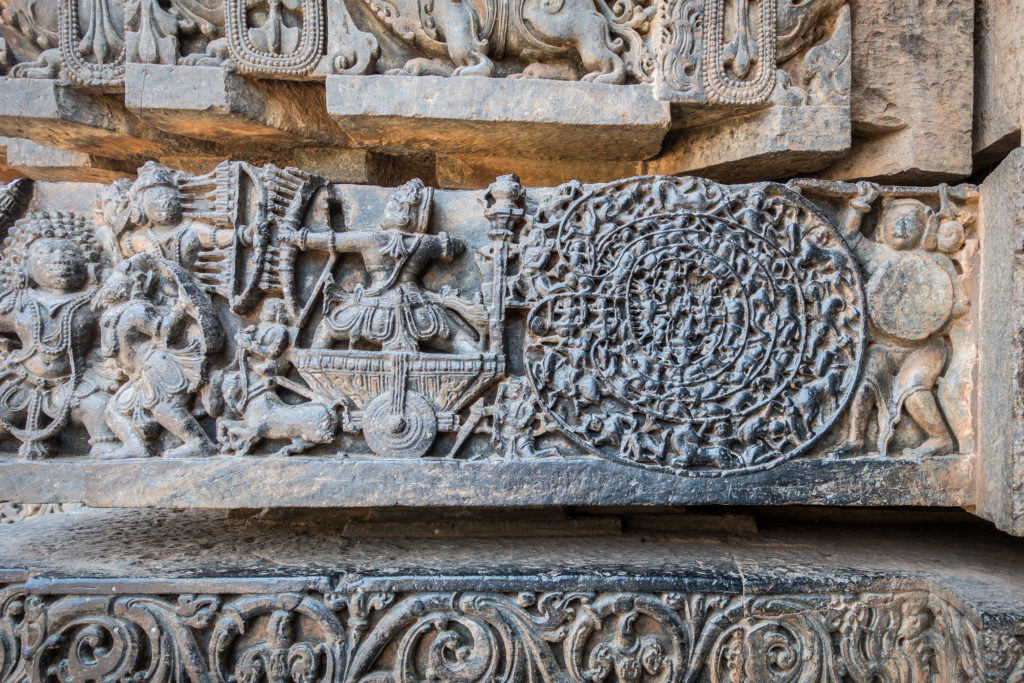
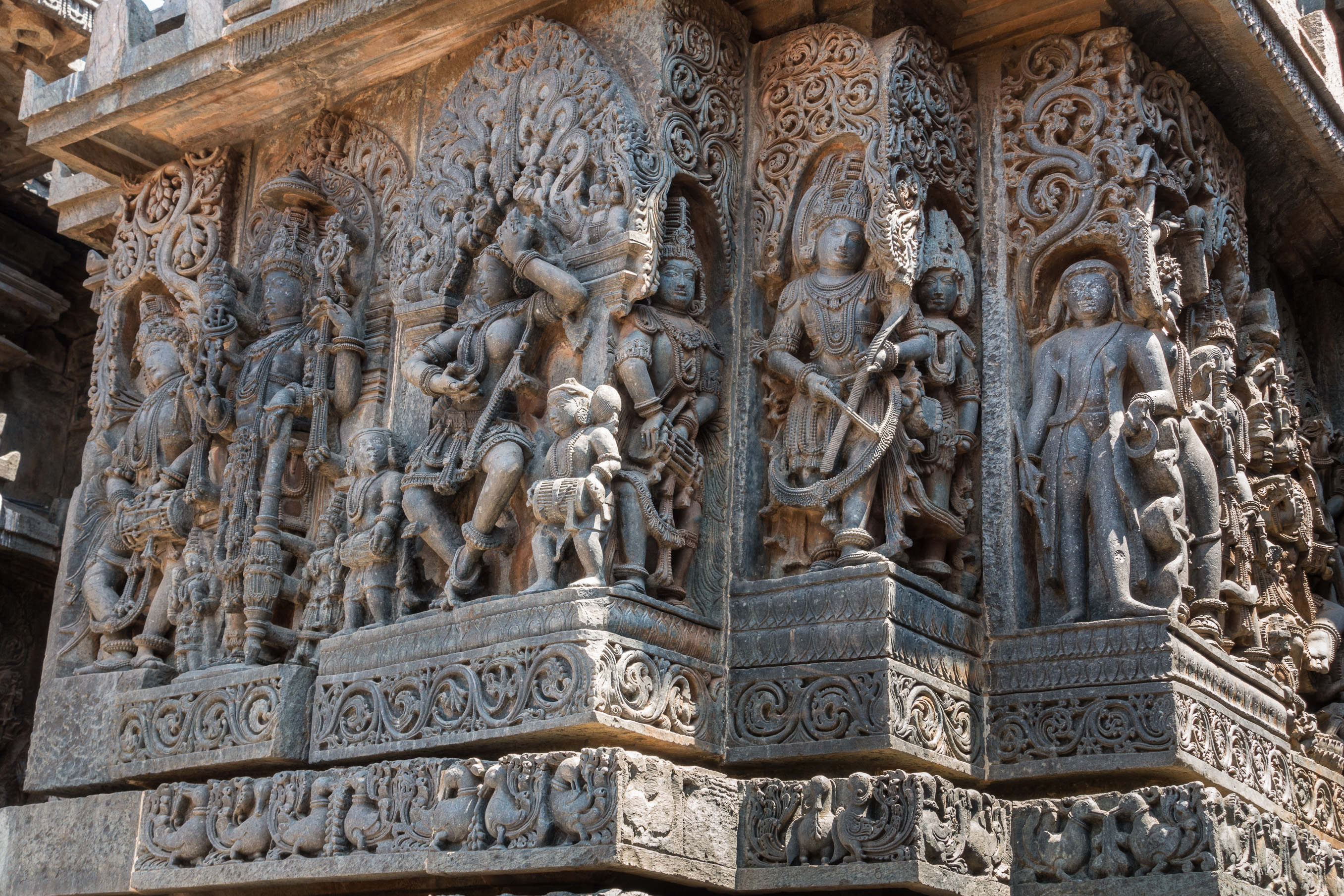
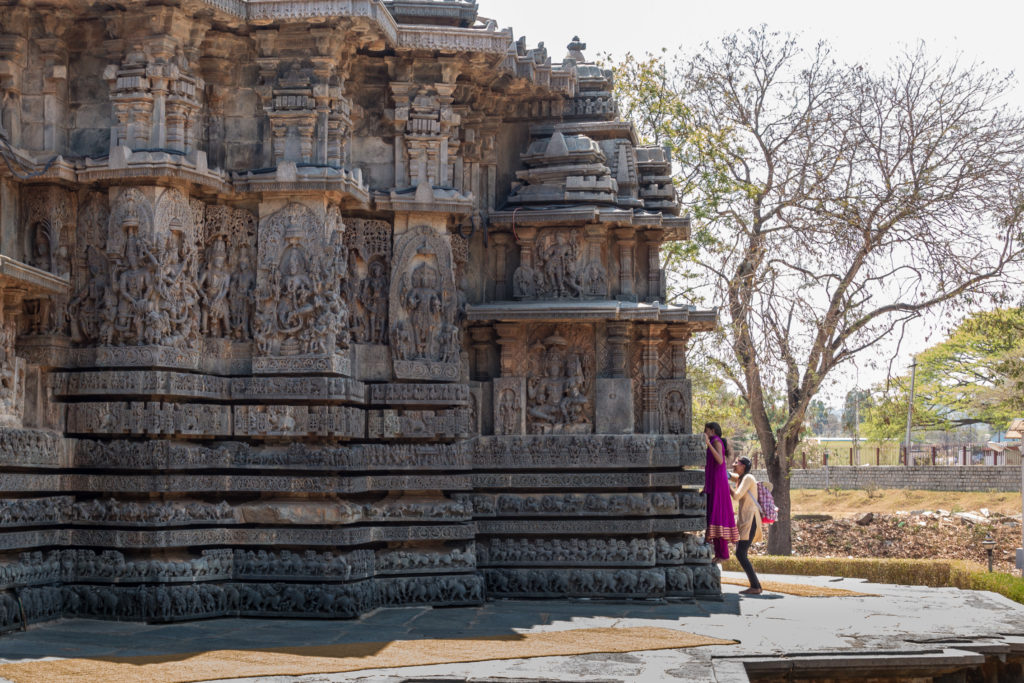
You must be logged in to post a comment.